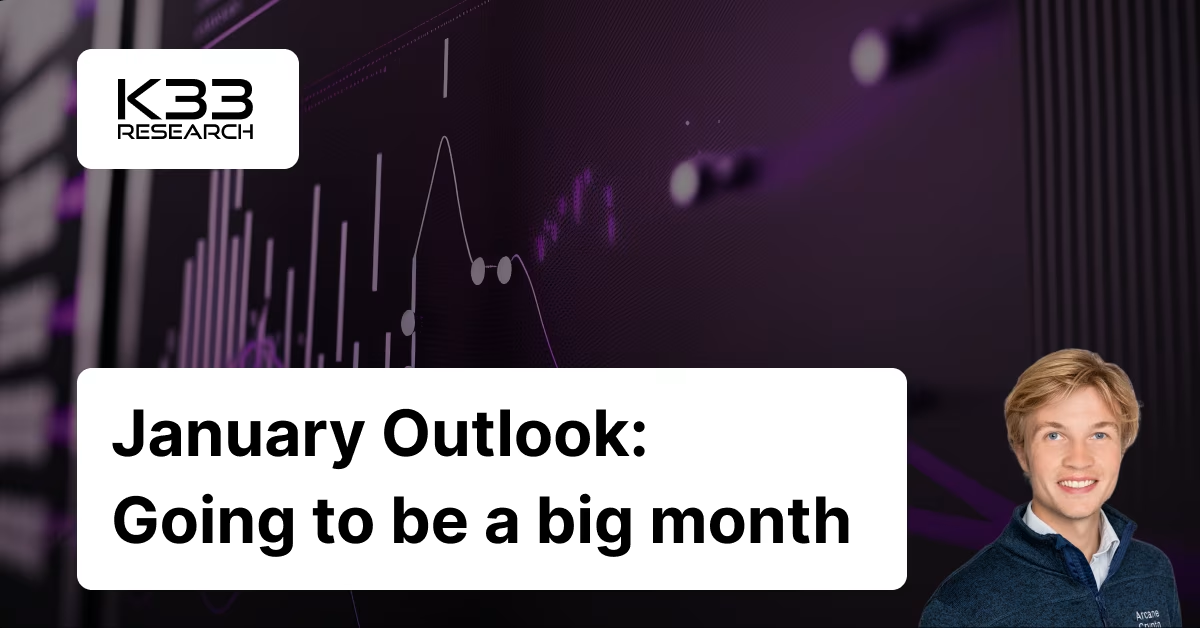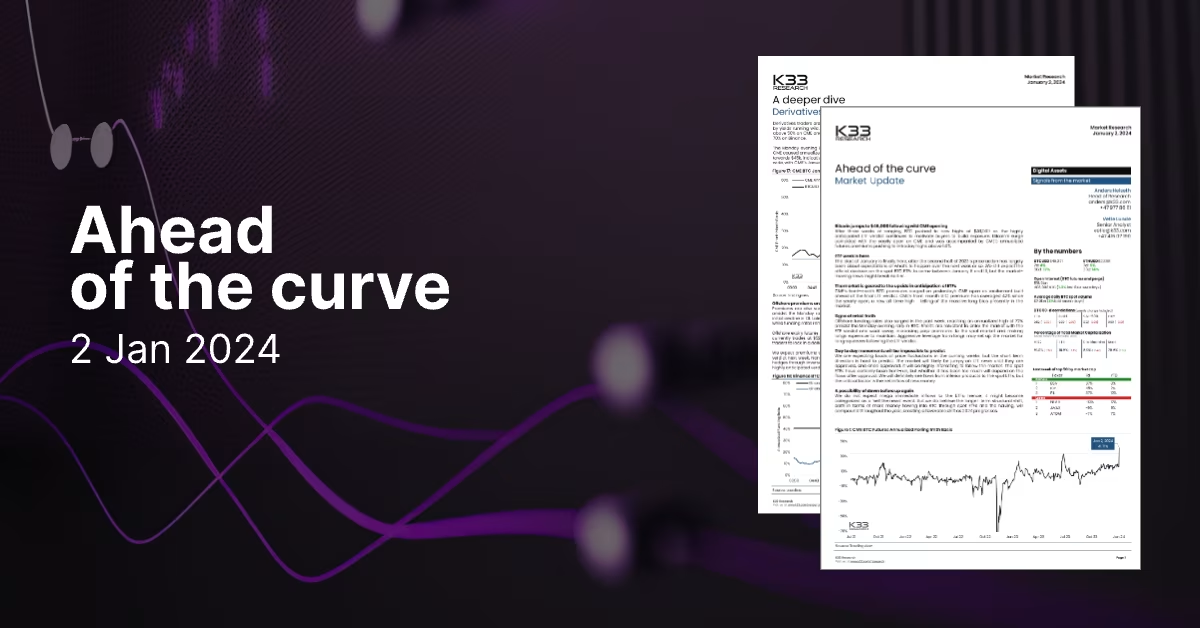January Outlook: Going to be a big month
After seven long months of BTC buoyancy, the date is finally here - the ETF verdict is coming! Is it priced in? Will the ETFs be approved? Will the launch be a sell-the-news event, or will inflows propel BTC higher? Questions are plentiful but impossible to answer in advance. Instead, I will briefly establish the current state of the market before assessing three scenarios. I will assign probabilities to each scenario and elaborate on my base case for the huge month to come in January.
A crowded long
There are definite signs of froth in the market. Futures premiums have surged to annualized levels of 50% on CME, with perps and offshore futures also seeing similar signs of exuberance. The extreme yields stem from strong expectations of the ETF verdict, with market participants crowding in to build long exposure at eye-blistering premiums ahead of the decision. I expect this fuming enthusiasm to last until Gary G and his crew deliver the verdict.Three scenarios for January
ETF filings are denied (5%)
ETF filings are approved but become a sell-the-news event (75%)
ETF filings are approved, and inflows propel prices higher (20%)
1. The SEC denies the ETF filings (5%)
A reasonable but strong consensus has formed in the market that the SEC will approve the ETF filings. After losing in court against Grayscale and frequent meetings with ETF sponsors leading the S-1 prospectus’ to be updated from in-kind creations to cash-creation, everything points towards approvals ahead. If the SEC pulls a shocker, the strong consensus is due to crush markets and represent a scenario where BTC is destined to plunge. This is a tail-risk for January but highly unlikely.
2. ETFs are approved – but become a sell-the-news event (75%)
Everything points towards traders being considerably exposed ahead of the verdict, with derivatives pushing massive premiums following BTC’s last three months of continuous upside momentum. A sell-the-news event could become a self-fulfilling prophecy as a non-significant share of short-term market participants has eyeballed the event as an area for profit taking.
3. ETFs are approved inflows that propel prices higher (20%)
For prices to propel higher, ETF inflows would have to offset selling pressure from short-term event traders. Open interest on CME has grown by 50,000 BTC over the past three months, likely motivated by front-running the ETF approval. At current premiums, maintaining CME exposure involves a 1-2% rolling cost each and every month – an acceptable cost of carry over a medium-term horizon ahead of a pivotal event but unsustainable in the long term, particularly as cheaper exposure alternatives arise.
Euro/Canadian BTC ETFs have also increased their BTC exposure by 30,000 BTC over the past three months, while it’s also fair to assume that a portion of spot buying pressure over the past month stems from traders aiming to front-run the ETFs. Whether the strategy is purely focused on accumulating ahead of the verdict or also involves distribution post-verdict is unclear.
Nonetheless, based on the above figures, it’s fair to assume that the U.S. ETFs should, at least, attract fresh inflows of at least 50,000 BTC ($2.3bn) in January to offset sell-side pressure. Fresh inflows do not include flows from futures-based ETFs to spot ETFs, as this represents a net zero change in exposure.
BITO alone, with all intricate futures-related inefficiencies, attracted $1.5bn worth of inflows in its first month – still, $2.3bn remains a tough ask. BITO launched at the final stages of the ZIRP era, a period where retail and professionals alike had an unprecedented appetite for investing in crypto.
Peaking at launch
I expect the current rally to peak at the verdict date due to sizeable profit-taking from short-term traders and will exit my BTC long held from September to early January. If futures premiums continue to climb higher, I will consider flipping my long to temporary hedge by shorting far-dated BTC expiry futures, as the current premiums reek of unsustainable exuberance.


